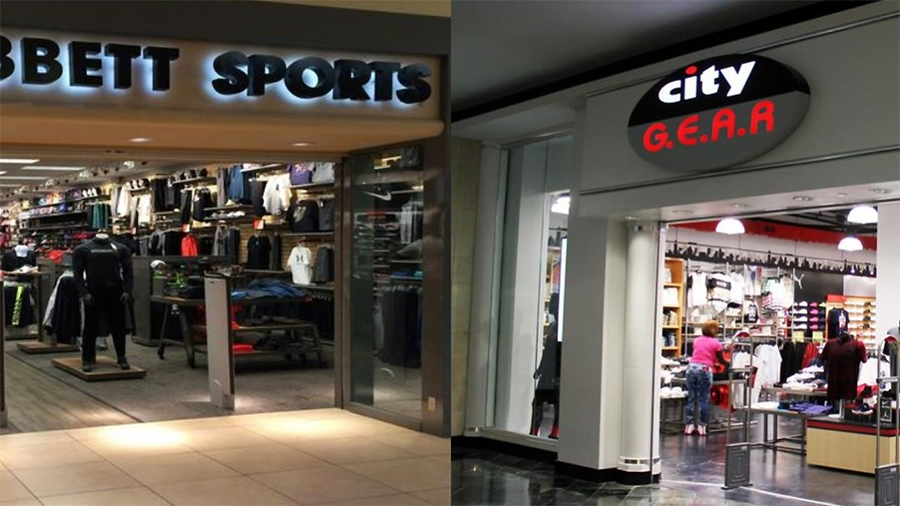Hibbett Inc. reported second-quarter results that came in below Wall Street’s targets as the chain was impacted by delayed back-to-school sales and high freight costs. Same-store sales declined 9.2 percent in the quarter. The company still maintained its EPS guidance for the year.
Mike Longo, President and Chief Executive Officer, stated, “Our team delivered a solid second quarter performance. We were able to achieve this result by improving our inventory position while providing a compelling selection of in-demand product, delivering superior in-store customer service and leveraging our best-in-class omni-channel platform. We were pleased with the resiliency of our consumer and the strong loyalty for our key brands. We believe some of our back-to-school sales shifted into the third quarter as consumers delayed shopping until closer to school start dates. As expected, margins were affected by continued high freight costs and the deleveraging of store and other fixed costs.”
Longo concluded, “Looking ahead, we believe we are well-positioned as we enter the second half of the year. Inventory was well positioned at the end of the second quarter resulting in favorable sales trends for the back-to-school shopping season, and we anticipate continued improvement from a supply chain standpoint. As a result, we are increasing our second half comparable sales guidance to the positive low-double digits from the positive high-single digits and the full year comparable sales guidance to between flat and positive low-single digits from the negative low-single digits. We currently expect year-over-year sales growth in the third and fourth quarters, which will result in a return to better leverage of fixed costs. New store openings remain on track, and we continue to invest in initiatives to strengthen our brand, improve our operations, and return value to shareholders.”
Second Quarter Results
Net sales for the 13-weeks ended July 30, 2022, decreased 6.3 percent to $392.8 million compared with $419.3 million for the 13-weeks ended July 31, 2021. Comparable sales decreased 9.2 percent versus the prior year but increased by 54.4 percent compared to the 13-weeks ended August 3, 2019 (“Fiscal 2020”), the most relevant comparable period prior to the COVID-19 pandemic. Brick and mortar comparable sales declined 11.9 percent while e-commerce sales increased 8.3 percent on a year-over-year basis. In relation to the 13-weeks ended August 3, 2019, brick and mortar comparable sales increased 42.0 percent and e-commerce sales grew 174.4 percent. E-commerce represented 15.2 percent of total net sales for the 13-weeks ended July 30, 2022, compared to 13.1 percent in the 13-weeks ended July 31, 2021, and 8.6 percent of total net sales for the 13-weeks ended August 3, 2019.
Gross margin was 34.4 percent of net sales for the 13-weeks ended July 30, 2022, compared with 39.0 percent of net sales for the 13-weeks ended July 31, 2021. The approximate 460 basis point decline was driven by lower average product margin of approximately 225 basis points, increased freight and transportation cost of approximately 125 basis points and deleverage of store occupancy of approximately 110 basis points.
Store operating, selling and administrative (“SG&A”) expenses were 23.3 percent of net sales for the 13-weeks ended July 30, 2022, compared with 22.3 percent of net sales for the 13-weeks ended July 31, 2021. The approximate 100 basis point increase is primarily the result of deleverage from the year-over-year sales decline in categories such as wages, employee benefits, repairs and maintenance, and supplies necessary to support a larger store base and increased e-commerce volume.
Net income for the 13-weeks ended July 30, 2022, was $24.7 million, or $1.86 per diluted share, compared with net income of $46.7 million, or $2.86 per diluted share, for the 13-weeks ended July 31, 2021.
For the 13-weeks ended July 30, 2022, we opened 12 net new stores, bringing the store base to 1,117 in 36 states, including the opening of its first store in Nevada.
As of July 30, 2022, we had $28.4 million of available cash and cash equivalents on its unaudited condensed consolidated balance sheet and we had $88.5 million of debt outstanding, leaving $36.5 million available under our $125.0 million unsecured credit facility.
Inventory as of July 30, 2022, was $366.2 million, a 68.9 percent increase compared to the prior year second quarter and up 65.5 percent from the beginning of the year.
During the 13-weeks ended July 30, 2022, we repurchased 145,178 shares of common stock under its Stock Repurchase Program (the “Repurchase Program”) for a total expenditure of $7.0 million. The Company also paid a quarterly dividend equal to $0.25 per outstanding common share that resulted in a cash outlay of $3.2 million.
Sales of $392.8 million was ahead of Wall Street’s consensus estimate of $387 million. Earnings of $1.86 were below Wall Street’s consensus estimate of $2.14.
Fiscal 2023 Year-to-Date Results
Net sales for the 26-weeks ended July 30, 2022, decreased 11.8 percent to $816.9 million compared with $926.1 million for the 26-weeks ended July 31, 2021. Comparable sales decreased 14.5 percent versus the 26-weeks ended July 31, 2021, but increased by 36.2 percent compared to the 26-weeks ended August 3, 2019. Brick and mortar comparable sales declined 17.4 percent and e-commerce sales increased 6.2 percent compared to the 26-weeks ended July 31, 2021. In relation to the 26-weeks ended August 3, 2019, brick and mortar comparable sales increased 25.6 percent and e-commerce sales grew 141.7 percent over the three-year period. E-commerce represented 14.9 percent of total net sales for the 26-weeks ended July 30, 2022, compared to 12.4 percent in the 26-weeks ended July 31, 2021, and 8.4 percent of total net sales for the 26-weeks ended August 3, 2019.
Gross margin was 35.7 percent of net sales for the 26-weeks ended July 30, 2022, compared with 40.3 percent of net sales for the 26-weeks ended July 31, 2021. The approximate 460 basis point decline was due to lower average product margin of approximately 190 basis points, store occupancy deleverage of approximately 140 basis points, and higher freight cost of approximately 130 basis points.
SG&A expenses were 22.9 percent of net sales for the 26-weeks ended July 30, 2022, compared with 20.0 percent of net sales for the 26-weeks ended July 31, 2021. The approximate 290 basis point increase is primarily the result of deleverage from the year-over-year sales decline in categories such as wages, professional fees, advertising and supplies necessary to support a larger store base and increased e-commerce volume.
Net income for the 26-weeks ended July 30, 2022, was $64.1 million, or $4.77 per diluted share, compared with $131.5 million, or $7.90 per diluted share for the 26-weeks ended July 31, 2021.
Capital expenditures during the 26-weeks ended July 30, 2022, were $30.5 million compared to $20.8 million in the 26-weeks ended July 31, 2021. Capital expenditures were predominantly related to store initiatives including new store openings, relocations, expansions, remodels and technology upgrades.
Fiscal 2023 Outlook
Hibbett said, “We expect there will continue to be a number of business and economic challenges in the back half of the 52-week fiscal year ending January 28, 2023 (“Fiscal 2023”) as noted below. However, given the performance we have experienced year-to-date and our outlook for the remainder of the fiscal year, we are raising our guidance for Fiscal 2023 total and comparable sales, updating our guidance for gross margin and SG&A and reiterating guidance for net new store growth, operating profit margin, diluted EPS and capital expenditures.
“Risks to be considered in the back half of Fiscal 2023 include the potential for ongoing supply chain disruptions, higher freight and transportation costs, increases in volume and severity of COVID-19 cases, a lack of stimulus and unemployment benefits, inflation, a tight labor market, geopolitical conflicts and a more cautious consumer. These factors may contribute to the complexity and volatility in forecasting Fiscal 2023 results.
“Our current guidance is as follows:
- Total net sales are expected to increase in the low-single digit range in dollars compared to our Fiscal 2022 results. This implies comparable sales are expected to be in the range of flat to positive low-single digits for the full year. Full-year brick-and-mortar comparable sales are expected to be in the flat to positive low-single digit range while full year e-commerce revenue growth is anticipated to be in the positive high-single digit range.
- It is anticipated that comparable sales will be in the positive low-double digits in the second half of the year. Sales forecasts are based on assumptions that as the year progresses, supply chain disruptions moderate, the timing of inventory receipts is consistent and predictable, and our overall inventory position remains strong.
- Net new store growth is expected to be in the range of 30 to 40 stores with units spread relatively evenly throughout the year.
- As a result of product margin headwinds, higher freight and transportation costs, store occupancy deleverage and a higher mix of e-commerce sales, gross margin as a percent of net sales is anticipated to decline by approximately 290 to 310 basis points compared to Fiscal 2022 results. This expected full year gross margin range of 35.1 percent to 35.3 percent remains above pre-pandemic levels. We expect gross margin results in comparison to the prior year will become more favorable in the back half of the year.
- SG&A as a percent of net sales is expected to increase by 10 to 20 basis points in comparison to Fiscal 2022 results due to wage inflation, costs associated with growth in e-commerce, a larger store count and annualization of back-office infrastructure investments in Fiscal 2022. The expected full year SG&A expense range of 22.7 percent to 22.8 percent as a percent of net sales is below pre-pandemic levels. We expect year-over-year quarterly SG&A comparisons will become less challenging in the back half of the year due to a more favorable sales trend supported by a stronger inventory position.
- Operating income is still expected to be in the low double-digit range as a percent of sales, also remaining above pre-pandemic levels.
- Diluted earnings per share are anticipated to remain in the range of $9.75 – $10.50 using an estimated full year tax rate of approximately 24.5 percent and an estimated weighted average diluted share count of 13.3 million.
- We continue to project capital expenditures in the range of $60 to $70 million with a focus on new store growth, remodels and additional technology and infrastructure investments.
- Our capital allocation strategy continues to include stock repurchases and recurring quarterly dividends in addition to the capital expenditures noted above.”
Under the prior guidance, total net sales were expected to be relatively flat in dollars, implying comparable sales growth in the negative low-single digits for the full year. Brick and mortar comparable sales were expected to be in the negative low-single digit range while e-commerce revenue is anticipated to be in the positive mid-single digit range. Gross margins were expected to decline by approximately 130 to 160 basis points. SG&A as a percent of sales was expected to increase by 70 to 100 basis points. The updated EPS guidance was in line with the former guidance.
Photo courtesy Hibbett
















